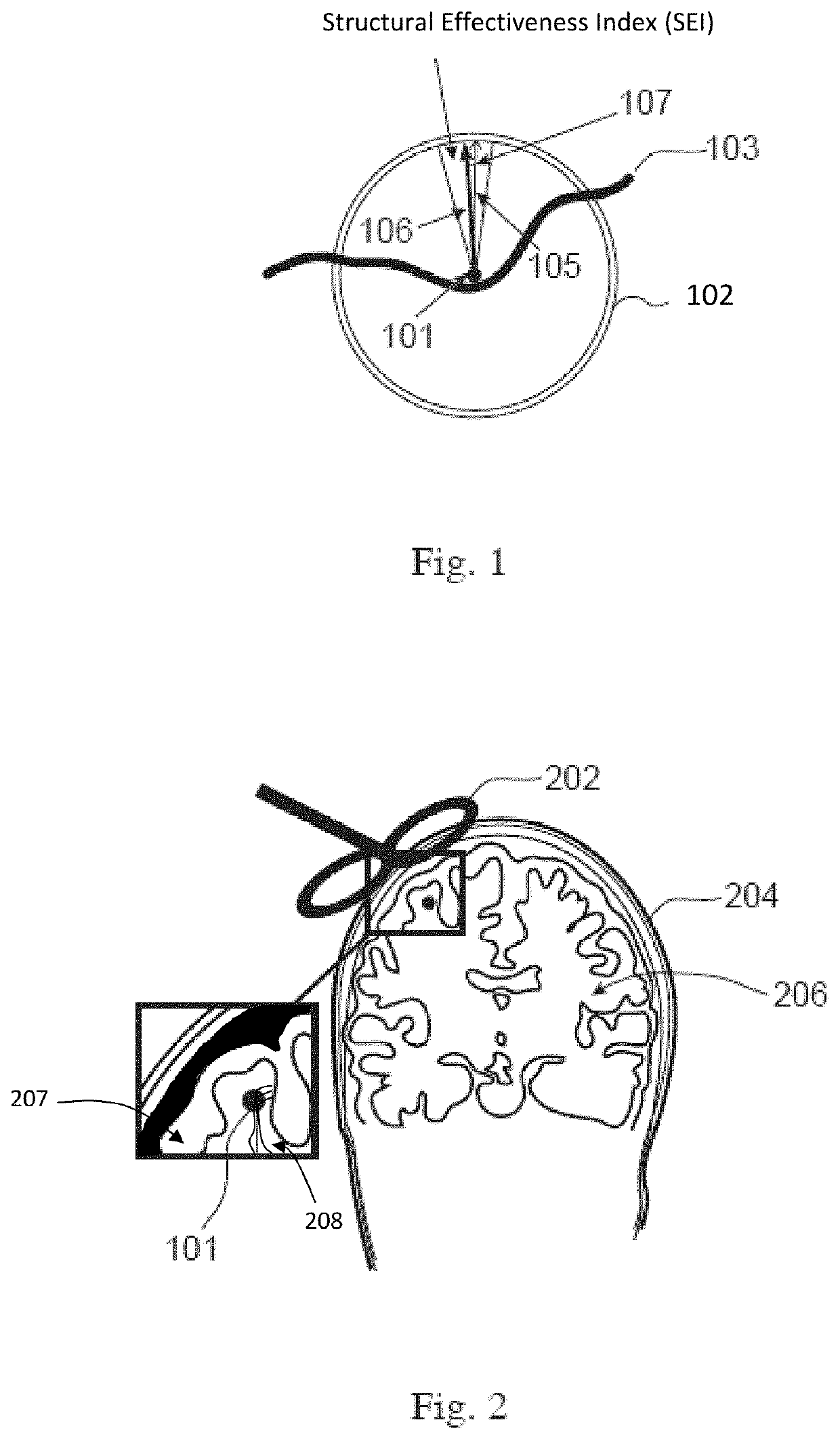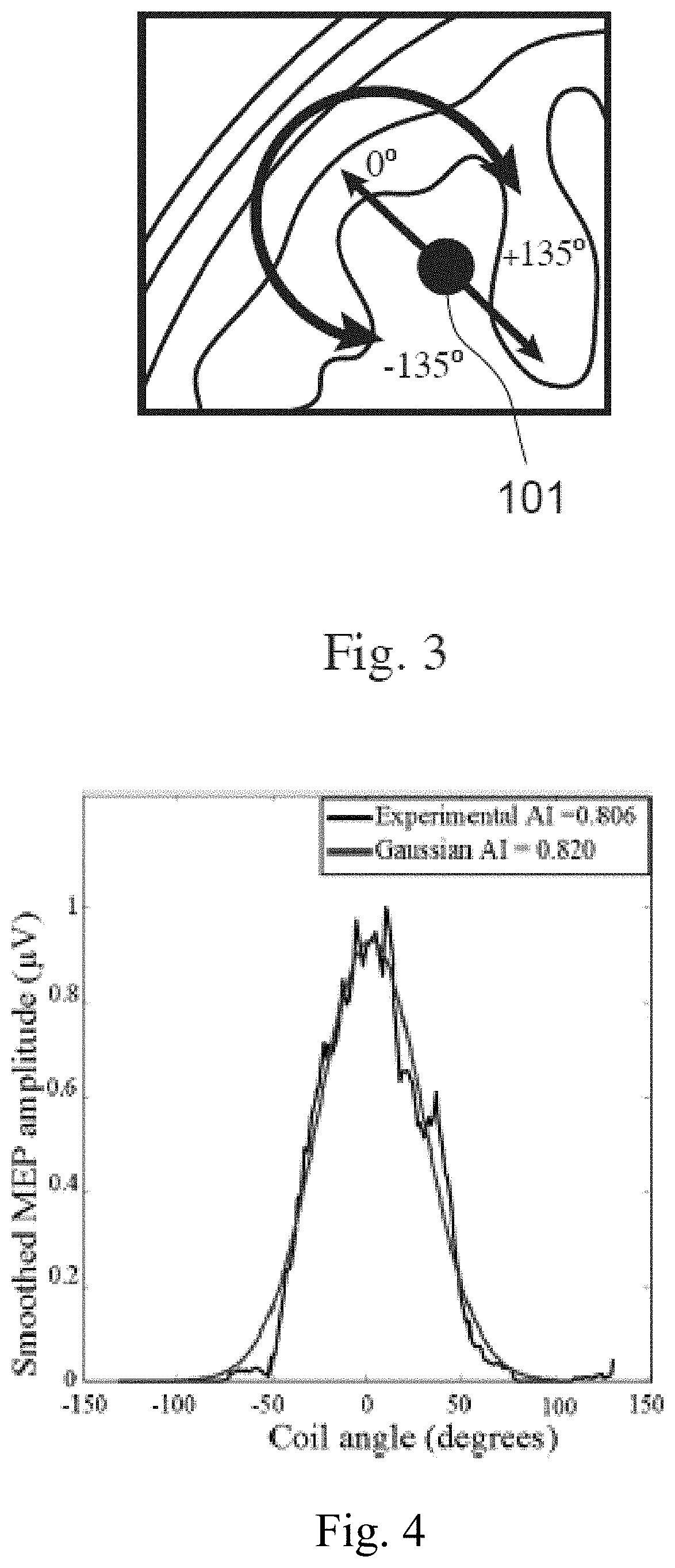Navigated transcranial magnetic stimulation planning using a structural effectiveness index
a transcranial magnetic stimulation and structural effectiveness index technology, applied in the field of navigational transcranial magnetic stimulation, can solve the problems of ineffective and inefficient stimulation doses
- Summary
- Abstract
- Description
- Claims
- Application Information
AI Technical Summary
Benefits of technology
Problems solved by technology
Method used
Image
Examples
Embodiment Construction
[0020]According to certain embodiments there are herein disclosed methods of navigated Transcranial Magnetic Stimulation (nTMS) planning. The methods herein can be used to create a plan for later administration of TMS to a patient. The methods herein can also be used during administration of TMS to a patient when planning the next and / or a future stimulation.
[0021]According to certain methods, planning for nTMS includes the steps of determining structural effectiveness index (SEI) for an area or volume of a brain. The SEI can account for the effectiveness of a TMS pulse based on at least one neurological feature of the brain. Examples of such neurological features are: the neuronal isotropy or anisotropy of an area of the brain, the orientation of neuronal bundles, a number or average number of neuronal bundles, connectedness of one area to another; number, density and / or thickness of white matter tracts at an area or a combination thereof. Additional examples will become apparent t...
PUM
 Login to View More
Login to View More Abstract
Description
Claims
Application Information
 Login to View More
Login to View More - R&D
- Intellectual Property
- Life Sciences
- Materials
- Tech Scout
- Unparalleled Data Quality
- Higher Quality Content
- 60% Fewer Hallucinations
Browse by: Latest US Patents, China's latest patents, Technical Efficacy Thesaurus, Application Domain, Technology Topic, Popular Technical Reports.
© 2025 PatSnap. All rights reserved.Legal|Privacy policy|Modern Slavery Act Transparency Statement|Sitemap|About US| Contact US: help@patsnap.com


